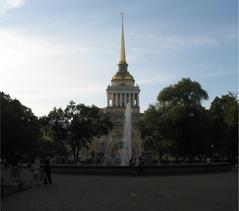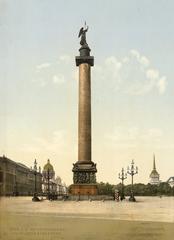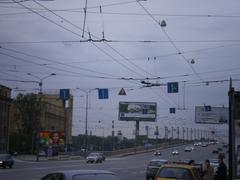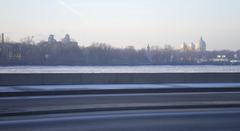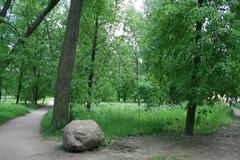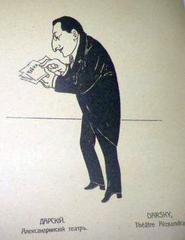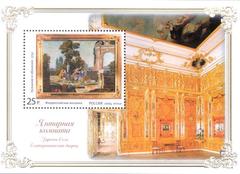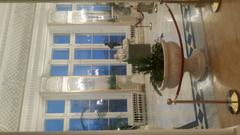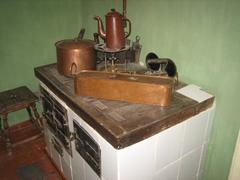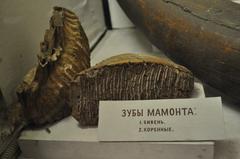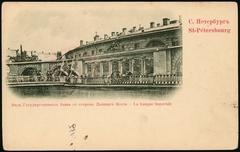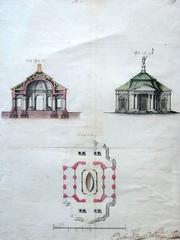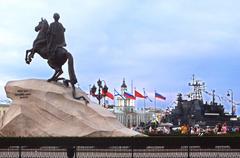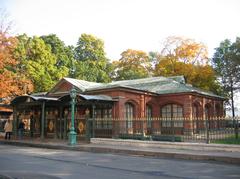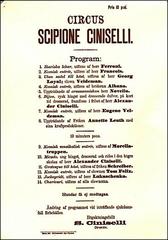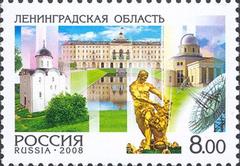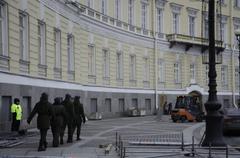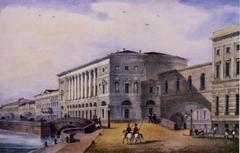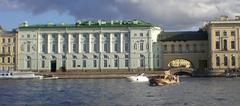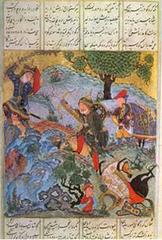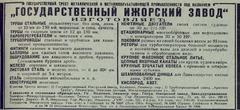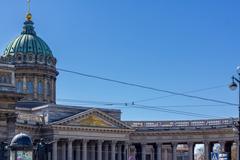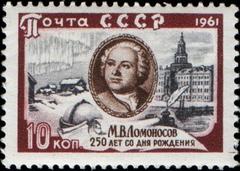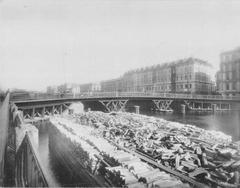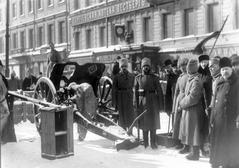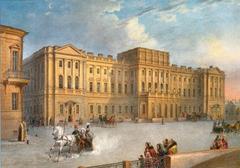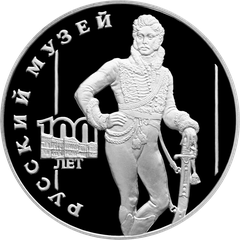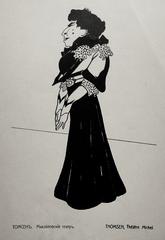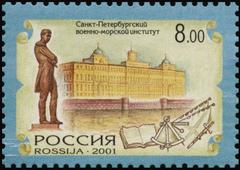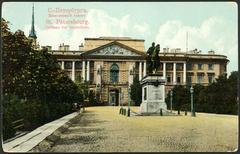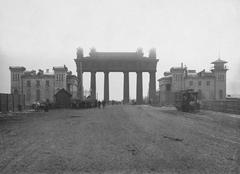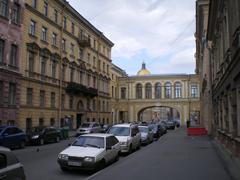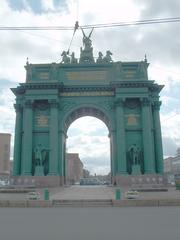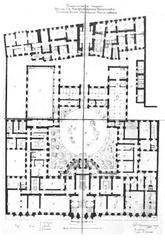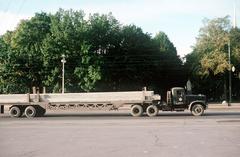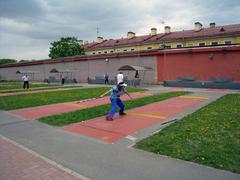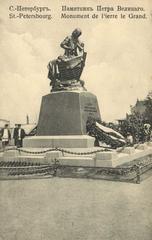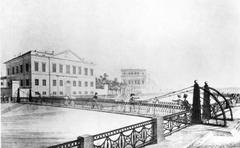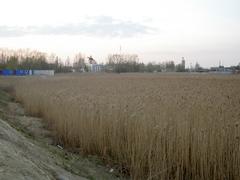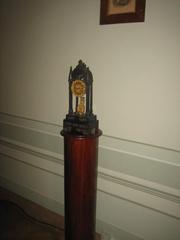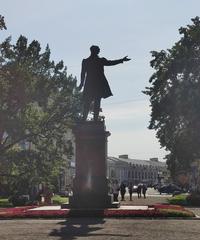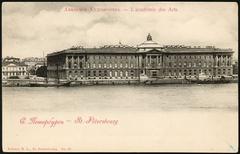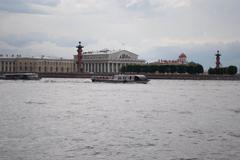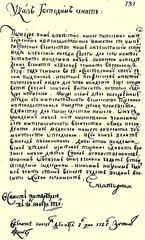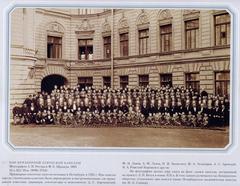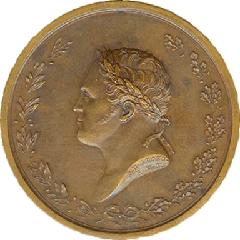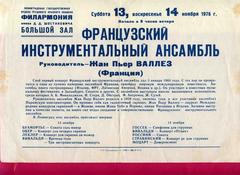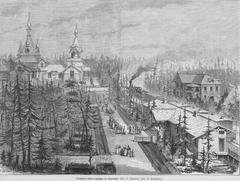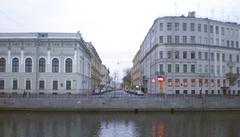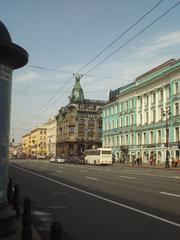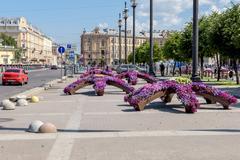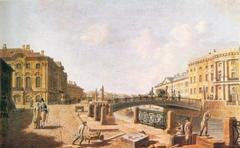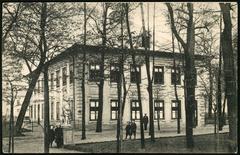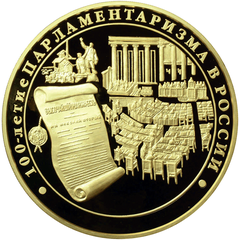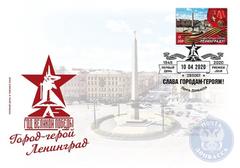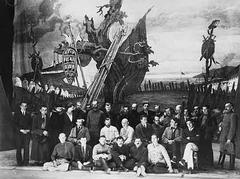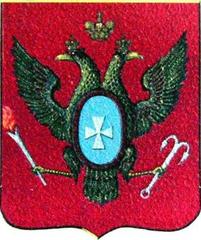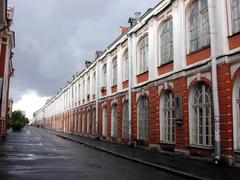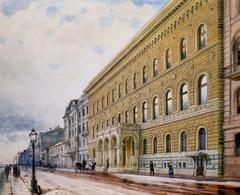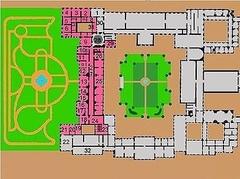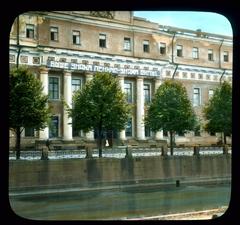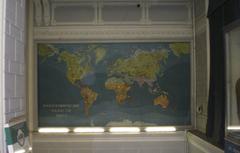Kolonna-Mayak Visiting Guide: Hours, Tickets, and Historical Sites in Saint Petersburg
Date: 31/07/2024
Introduction
Saint Petersburg, Russia, is a city rich in history, culture, and architectural marvels. Among its many landmarks, Kolonna-Mayak, also known as the Column of Glory and the Rostral Columns, stand out as iconic symbols of the city’s naval victories and architectural ingenuity. Erected in the 19th century, these monuments not only commemorate significant events but also serve as navigational aids. This comprehensive guide aims to provide an in-depth look at Kolonna-Mayak’s historical significance, architectural features, visitor information, and practical tips for tourists. Whether you’re a history buff, architecture enthusiast, or first-time visitor, this guide will help you make the most of your visit to these remarkable structures. (saint-petersburg.com, winetraveler.com)
Table of Contents
Historical Background
Origins and Construction
The Column of Glory was erected in 1886 to commemorate Russian victories in the Russo-Turkish War of 1877-1878. Designed by architect David Grimm, it was situated near the Trinity Cathedral and built from 128 Turkish cannons captured during the war, cast by the Novolipetsk Steel company.
Destruction and Restoration
In 1929, the original column was destroyed under the orders of Soviet leader Joseph Stalin. In 2004, it was meticulously restored using the original blueprints, as part of Saint Petersburg’s 300th-anniversary celebrations.
Architectural Features
The Column of Glory stands on a granite plinth and is adorned with bronze anchors and ship prows, known as rostra. The column is topped with a statue of an angel holding a cross, symbolizing peace and victory.
Symbolism and Significance
The use of captured Turkish cannons in its construction serves as a reminder of Russia’s military victories. Its proximity to the Trinity Cathedral adds a spiritual dimension, linking military success with divine favor.
Cultural Impact
The Column of Glory is a popular site for locals and tourists, often featured in postcards and travel guides, symbolizing the rich history and cultural heritage of Saint Petersburg.
Visitor Information
Visiting Hours
The Column of Glory is accessible to visitors year-round. Typical visiting hours are from 10:00 AM to 6:00 PM daily, but it’s advisable to check for any seasonal changes or special closures.
Ticket Prices
Entrance to the Column of Glory is free of charge. However, guided tours and special events may have associated costs.
Guided Tours and Special Events
Guided tours are available and offer a deeper insight into the monument’s history and significance. Special events are occasionally held at the site, particularly during national holidays and commemorative dates.
Accessibility
The monument is located near the Trinity Cathedral and the Old Saint Petersburg Stock Exchange, easily accessible by public transport, including the Saint Petersburg metro system.
Related Monuments
The Column of Glory is part of a broader tradition of victory columns in Saint Petersburg. Another notable example is the Alexander Column in Palace Square, commemorating the Russian victory over Napoleon’s France.
FAQ
Q: What are the visiting hours for the Column of Glory?
A: The typical visiting hours are from 10:00 AM to 6:00 PM daily.
Q: How much do tickets cost to visit the Column of Glory?
A: Entrance is free, but guided tours and special events may have associated costs.
Q: Is the Column of Glory accessible by public transport?
A: Yes, the site is easily accessible via the Saint Petersburg metro system.
Conclusion
The Column of Glory stands as a powerful symbol of Russian history, military success, and architectural excellence. Its restoration and continued preservation highlight the importance of maintaining historical monuments as a way to connect with the past and inspire future generations. Visitors to Saint Petersburg should not miss the opportunity to experience this remarkable piece of history firsthand. To stay updated, follow us on social media or download our app for more travel tips and updates.
Visiting the Rostral Columns in Saint Petersburg: History, Tickets, and Architectural Significance
Historical Context
Kolonna-Mayak, also known as the Rostral Columns, are iconic architectural landmarks in Saint Petersburg, Russia. These columns were constructed in the early 19th century as part of the city’s extensive urban development under Tsar Alexander I. Designed by the French architect Jean-François Thomas de Thomon, the columns were intended to serve both as navigational aids and as monumental symbols of Russia’s naval prowess. The columns are situated on the Spit of Vasilievsky Island, a strategic location that underscores their importance in guiding ships through the Neva River (saint-petersburg.com).
Design and Structure
The Rostral Columns are characterized by their unique design, which incorporates elements of classical architecture with distinct maritime symbolism. Each column stands approximately 32 meters tall and is adorned with prows (rostra) of ships, a feature borrowed from ancient Roman naval monuments. These prows symbolize Russia’s naval victories and maritime strength. The columns are constructed from red granite, a material chosen for its durability and aesthetic appeal. At the top of each column is a bronze statue representing a mythological figure, further enhancing the columns’ grandeur (saint-petersburg.com).
Symbolism and Cultural Significance
The Rostral Columns are not merely decorative; they are imbued with deep symbolic meaning. The prows of the ships represent Russia’s naval victories, while the statues atop the columns symbolize various rivers of Russia, including the Volga, Dnieper, Neva, and Volkhov. This symbolism underscores the importance of waterways in Russian history and culture. The columns also serve as a reminder of Saint Petersburg’s status as a major port city and its strategic importance in maritime trade and defense (winetraveler.com).
Architectural Features
Columns and Capitals
The columns are designed in the Doric order, one of the simplest and most robust of the classical architectural orders. The Doric capitals are plain yet elegant, providing a sturdy base for the elaborate sculptures that crown the columns. The use of the Doric order reflects the influence of classical architecture on Russian design during the early 19th century (saint-petersburg.com).
Sculptures and Decorations
At the top of each column are bronze statues representing mythological figures. These statues are the work of the sculptor Vasily Demut-Malinovsky, who was renowned for his ability to blend classical and Russian artistic traditions. The statues add a dynamic element to the columns, making them not just static monuments but vibrant symbols of Russian mythology and history (winetraveler.com).
Functional Aspects
While the Rostral Columns are primarily monumental, they also serve a practical purpose. Originally, they were equipped with oil lamps that acted as navigational beacons for ships entering the port of Saint Petersburg. These lamps were later replaced with gas lights and eventually with electric lights, ensuring that the columns continued to serve their navigational function well into the modern era. This dual role as both monuments and functional structures highlights the ingenuity of their design (saint-petersburg.com).
Visitor Information
Visiting Hours and Tickets
The Rostral Columns are accessible to the public at all times, as they are located outdoors on the Spit of Vasilievsky Island. There is no admission fee to visit the columns themselves. However, nearby attractions such as the Kunstkamera Museum and the Old Stock Exchange may have their own visiting hours and ticket prices.
Special Events
Throughout the year, the Rostral Columns are illuminated during special events and holidays, adding to their visual appeal. These events often coincide with major celebrations in Saint Petersburg, providing a unique experience for visitors.
Visitor Experience
Accessibility
The Rostral Columns are easily accessible to visitors, located on the Spit of Vasilievsky Island, a popular tourist destination in Saint Petersburg. The site is well-connected by public transportation, and there are several nearby attractions, including the Old Stock Exchange and the Kunstkamera Museum. Visitors can enjoy panoramic views of the Neva River and the surrounding cityscape from the base of the columns (saint-petersburg.com).
Guided Tours
For those interested in a more in-depth exploration of the Rostral Columns, guided tours are available. These tours provide detailed information about the history, design, and symbolism of the columns, offering a richer understanding of their significance. Additionally, virtual tours are available for those who cannot visit in person, allowing a broader audience to appreciate these architectural marvels (winetraveler.com).
Nearby Amenities
Visitors to the Rostral Columns can also enjoy a variety of nearby amenities, including restaurants, cafes, and hotels. Notable dining options include Staraya Tamozhnya, a luxury restaurant with a long-standing reputation for excellence, and Grad Petrov, a German brew pub with a scenic riverside terrace. Accommodation options range from the modern deluxe Solo Sokos Hotel Palace Bridge to the elegantly decorated Tradition Hotel, ensuring that visitors have a comfortable and enjoyable stay (saint-petersburg.com).
Nearby Attractions and Travel Tips
Saint Petersburg offers a plethora of historical sites and attractions near the Rostral Columns. Don’t miss the Peter and Paul Fortress, the State Hermitage Museum, and the Church of the Savior on Spilled Blood. For an efficient visit, consider purchasing a City Pass, which offers access to multiple attractions at a discounted rate.
FAQ
Q: What are the visiting hours for the Rostral Columns?
A: The Rostral Columns are accessible to the public at all times as they are located outdoors.
Q: Do I need a ticket to visit the Rostral Columns?
A: No, there is no admission fee to visit the columns themselves.
Q: Are there guided tours available?
A: Yes, guided tours are available for those interested in an in-depth exploration of the columns.
Q: What nearby attractions should I visit?
A: Nearby attractions include the Kunstkamera Museum, the Old Stock Exchange, and the Peter and Paul Fortress.
Conclusion
The Column of Glory and the Rostral Columns are not just monuments; they are enduring symbols of Saint Petersburg’s rich history and cultural heritage. Their architectural brilliance, historical significance, and practical functions make them must-visit landmarks for anyone exploring the city. Whether you’re captivated by the intricate designs of the Rostral Columns or the historical weight of the Column of Glory, these sites offer a unique glimpse into Russia’s past and present. Accessible by various modes of transportation and surrounded by other significant attractions, a visit to Kolonna-Mayak promises to be a memorable experience. To stay updated on visiting hours, special events, and guided tours, consider downloading the Audiala mobile app or following relevant social media channels. (winetraveler.com, saint-petersburg.com)
References
- Column of Glory, Saint Petersburg: Visiting Hours, Tickets, and Historical Significance, 2024, saint-petersburg.com
- Visiting the Rostral Columns in Saint Petersburg: History, Tickets, and Architectural Significance, 2024, winetraveler.com
- Ultimate Guide: Visiting Kolonna-Mayak in Saint Petersburg - Hours, Tickets, and Tips, 2024, usebounce.com
